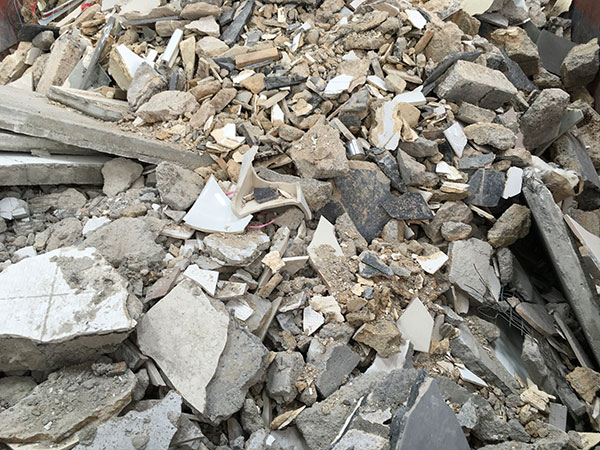The Matter of Debris
Keywords
DEBRIS, MATERIALITY
DEBRIS, MATERIALITY
Published on
06/02/2023
06/02/2023
“disaster”: from the Ancient Greek ἀστήρ (aster), or ‘star’.
The word ‘debris’ describes the scattered, broken fragments of a once whole entity, often the result of destruction, violence, disaster, explosion, collision or demolition. Built into the word itself is the root meaning of ‘breaking apart’ – an inherent sense of violence that is inextricable to the materiality of debris.
This sense of violence is evident in the many warnings about the problem of space debris — also known as space junk — and the impending possibility of collisions with the many operational satellites in space. These floating detritus pose a significant hazard, where the smallest specks can cause damage as they hurtle through space.
The materiality of debris, both earthly and space-bound, always refer to an essential fragmentation from an original, constituting form. It speaks to a past function or state of wholeness which has been cut loose to drift in the margins. Space debris, in particular, differ from traditional terrestrial infrastructures, which “turn into risks only be a linear process of decay and neglect”1. In contrast, satellite networks become indistinguishable from space debris as they are “both agents of destruction and subject to infrastructural breakdown”2.
In our exploration of the materiality of debris, we are drawn to the debris of cities and urbanisation – the rubble and waste material that accompanies the near perpetual state of demolition and construction that takes place in a city like Singapore. In waste research, an overwhelming focus is placed on municipal waste, yet a large fraction of waste is generated by industry, agriculture, and construction activities. Singapore produces a disproportionately high amount of construction debris, but justifies this with recycling most of it3.

Teo Bak Soah Trading Co. Singapore, concrete waste from light and heavy industrial construction.
In contrast, what makes space debris particularly difficult to visualise is their location within zones of invisibility in orbital space, their perceived distance, and the lack of easily-accessible material analogues on Earth.
Through this project, Lucy in the Sky with Debris, we seek to develop a material investigation into the matter of debris in itself and centre the corporeality of these materials. With a focus on industrial waste as a material analogue for space debris, it brings the false externalisation of space junk back into a process of re-internalisation back on Earth.
•

Spotlight: Project Adrift (Cath Le Couteur & Nick Ryan)
As part of Project Adrift, the artists collected over 250 terrestrial objects from project volunteers as symbolic pieces of space debris. They then used them to generate a library of 1000 sounds for the sound instrument 'Machine 9', a handcrafted electromechanical sound instrument that tracks the positions of 27,000 pieces of space junk, transforming them into sound, in real time, as they pass overhead. For us, Project Adrift’s work makes connections and establishes a link between everyday objects and space junk, allowing us to visualise and materialise them in a way that can be understood.
1Clormann, M., & Klimburg-Witjes, N. (2022). Troubled Orbits and Earthly Concerns: Space Debris as a Boundary Infrastructure. Science, Technology, & Human Values, 47(5), 960–985.
2Ibid.3National Environment Agency, Waste Statics and Overal Recycling. https://www.nea.gov.sg/our-services/waste-management/waste-statistics-and-overall-recycling
2Ibid.3National Environment Agency, Waste Statics and Overal Recycling. https://www.nea.gov.sg/our-services/waste-management/waste-statistics-and-overall-recycling
